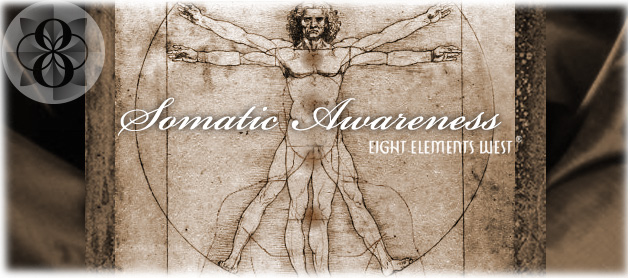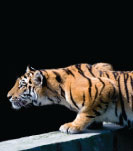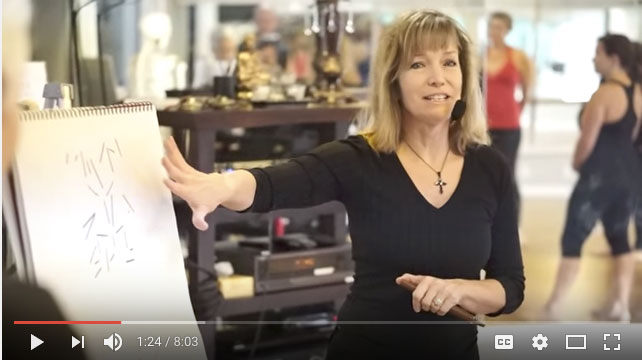SLEEP Sleep loss is perhaps most oftenly disrupted natural cycle of all for clients –…

Somatic Experiencing – Orientation
Orientation
The instinct for safety
Orientation is the natural response of animals to scan the environment to assess for safety. The body engages with the environment to register and map, is it safe? Can I settle here to eat, sleep, or hang out? Or will I need to run? The body’s response to the environment (the landscape, including people) can be either sympathetic, dorsal vagal, or ventral vagal – that is, either fight/flight, freeze, or . . . friend.
Mapping territory involves two main bodily responses:
1) Agility to turn the head so the eyes, ears and nose can orient toward the source of stimulation to either respond to potential threat, or remain calm if all is safe.
2) Autonomic shifts such as pupil dilation or a momentary increase in heart rate, both in preparation for potential fight, flight or freeze.
What constitutes sufficient novelty to warrant a full orienting reflex is determined in the moment. For instance, the movement of large shapes and shadows on the horizon may register a full reflex; focused mental concentration often inhibits the reflexive response of orienting to the environment; and conversely, complex social environments open the door to a wide variety of possible responses.
Orientation in a session supports nervous system processing. You can use this process on your own to increase nervous system settling. Try it as part of a daily practice to strengthen self-regulation, and use it when more stability and greater sense of self-presence is needed.
Orientation, At-Home Tool – “Let”
1. Sit in a comfortable chair in a quiet place.
2. Notice your back against the chair, and your feet on the floor.
3. Take note of areas of the body where you may want to release tension.
4. Now let your eyes go where they will, for about 1 minute, and notice objects, colors or shapes. Or notice sound and touch. Let your senses connect with what is around you, without anything needing to happen. Allow your eyes to rest back and for your senses to receive.
5. “Let” is the key word. Let the eyes be, let the neck be, let the body be. And now notice internal body sensations that arise when engaging this way. Or notice what other ways in which your body responds by being more in the present moment – safe, secure, and open.
7. Notice your body and breath. You may experience ease, quietude, softness, fullness or centeredness.
Orientation, Out-in-the-World Tool – “Receive”
1. Let’s say you are entering your day getting in the car to go to work, or to meet friends. Out in the world your body automatically assesses your surroundings for safety, often without your conscious awareness.
2. Sit or stand in this environment. Become conscious, taking special note of your feet and “back body” as you do so. (back body = back of head, back of the spine, gluteals, hamstrings and back heels)
3. Now allow your eyes to rest and for their awareness to rest and recede back toward the center of the brain. Allow your face to soften.
4. Slowly now, let your eyes and senses gently scan the environment. Notice an object, color or a shape of particular interest. Let your senses rest there for a bit without locking in. Let your eyes and the whole of your body “receive” rather than “retrieve” the things within your environment. Sit back, and receive the sense of your environment.
5. “Receive” is the key word.
6. Now notice internal body sensations that arise from engaging in this way. Notice the other ways in which your body responds to the present moment in a safe, secure, and open way.
5. Now notice your body and breath. You may experience ease, quietude, softness, fullness or centeredness.
If feeling settled is challenging in spite of practicing orientation, add one of two layers to your practice:
1) As your eyes look, begin naming objects in the environment and allow your attention to land on each for a few moments. Name the object out loud as well as any descriptors for that object. Notice how this shifts your internal experience.
2) As your eyes look, look at the space between objects in the environment and allow your attention to rest there, feeling and sensing the spaces in between things. Notice how this shifts your internal experience.
In yoga, the eyes, face, and senses are invited to become gentle and non-aggressive. This is especially important for Western cultures where we are taught to “go after what we want” and “make things happen.” Certainly there are times to do so. Yet, what is often more needed is to let life lead us, to guide us on both macro and micro levels. While the macro is a vision of the future ‘out there’, the micro level is moment by moment guidance ‘in here’. Receiving simple daily moments with our inner senses and taking in the nuanced textures of the felt-sense will guide and determine our experience … and it’s rewarding – if we take the time to notice.
Perhaps you can remember taking a hike in the forest, when
a small sound suddenly grabs your attention. Your ears and eyes perk up to detect sound and movement. As they do, your neck and back tense, and your arms and legs prepare to mobilize. Your eyes narrow in an attempt to detect the location and source of this movement. As your autonomic nervous system becomes activated your heart rate and breathing speed up. Your body is asking the question, is it a threat? Or is it safe?
suddenly grabs your attention. Your ears and eyes perk up to detect sound and movement. As they do, your neck and back tense, and your arms and legs prepare to mobilize. Your eyes narrow in an attempt to detect the location and source of this movement. As your autonomic nervous system becomes activated your heart rate and breathing speed up. Your body is asking the question, is it a threat? Or is it safe?
To establish the degree of caution that is needed, your eyes, ears, head and neck turn to scan the environment. Then you notice how you feel. Are you alert? Engaged? Curious? Or anxious about potential danger? This sequence of movements, assessments and decisions are made within seconds – the less time you waste, the greater your chance of survival in the face of potential danger. The primal scanning of the environment cues the nerves on the back of the neck and in the brain to signal that indeed “all is well and safe”. The successful renegotation of trauma always begins first with establishing some sense of safety in the body and in one’s surroundings.
Dr. Peter Levine and Orientation, a survival instinct
“When an animal senses a change in its environment, it responds by looking for the source of the disturbance … The animal orients itself toward a potential mate or source of food, and away from danger.” 1
“Orienting responses are the primary means a through which the animal tunes into its environment. These responses are constantly merging into one another and adapting to allow for a range of reactions and choices.” 2
‘”In fact, the word instinct is rarely found in modern psychological literature. Rather it is purged and replaced with terms such as drives, motivations and needs. While instincts are still routinely drawn up to explain animal behaviors, we have somehow lost sight of how many human behavior patterns (though modifiable) are primal, automatic, universal and predictable.” 3
“While you are strolling leisurely in an open meadow, a shadow suddenly moves in the periperhy of your vision. Instinctively, all of your movement is arrested (with the feeling of a startle)… if it had been an eagle taking flight that cast the shadow, a further orientation of tracking-pursuit would likely occur….. Most organisms possess dispositions, if not specific approach/avoidance responses, to large moving contours …… If the initial shadow had been from a raging grizzly bear (rather than from a rising eagle), a very different reaction would have been evoked: the preparation to flee. This is not, as James discovered, because we think “bear,” evaluate it as dangerous and then run. It is because the contours and features of the large, looming, approaching animal cause a particular light pattern upon the retina of the eye. This stimulates a configuration of neural firing that is registered in the phylogenetically primitive brain regions. This “pattern recognition” triggers, in turn, the preparation for defensive responding before it is registered in consciousness. These unconscious responses derive from genetic predispositions (as well as from the outcomes of previous personal experience with similar large animals) … Muscles, viscera and autonomic nervous system activity cooperate in preparing for escape.” 4

Gloria Gonzalez, CMT SEP, is CCO/Founder of Eight Elements West, an Institute for Somatic Education and Integrative Wellness, and creator of I AM THE MEDICINE. Her private practice works with nutrition, accumulated stress and trauma through: Somatic Experiencing, Organic Intelligence, Visceral Manipulation and Craniosacral Therapy.
1, 2 Levine, P. and Frederick, A. Waking the Tiger: Healing Trauma: The Innate Capacity to Transform Overwhelming Experiences. Berkeley, CA: North Atlantic Books, 1997. p93, p94
3 Levine, P, In An Unspoken Voice: How the Body Releases Trauma and Restores Goodness. Berkeley, CA: North Atlantic Books, 2010. p231
4 Levine, P, In An Unspoken Voice: How the Body Releases Trauma and Restores Goodness. Berkeley, CA: North Atlantic Books, 2010. p237-239
